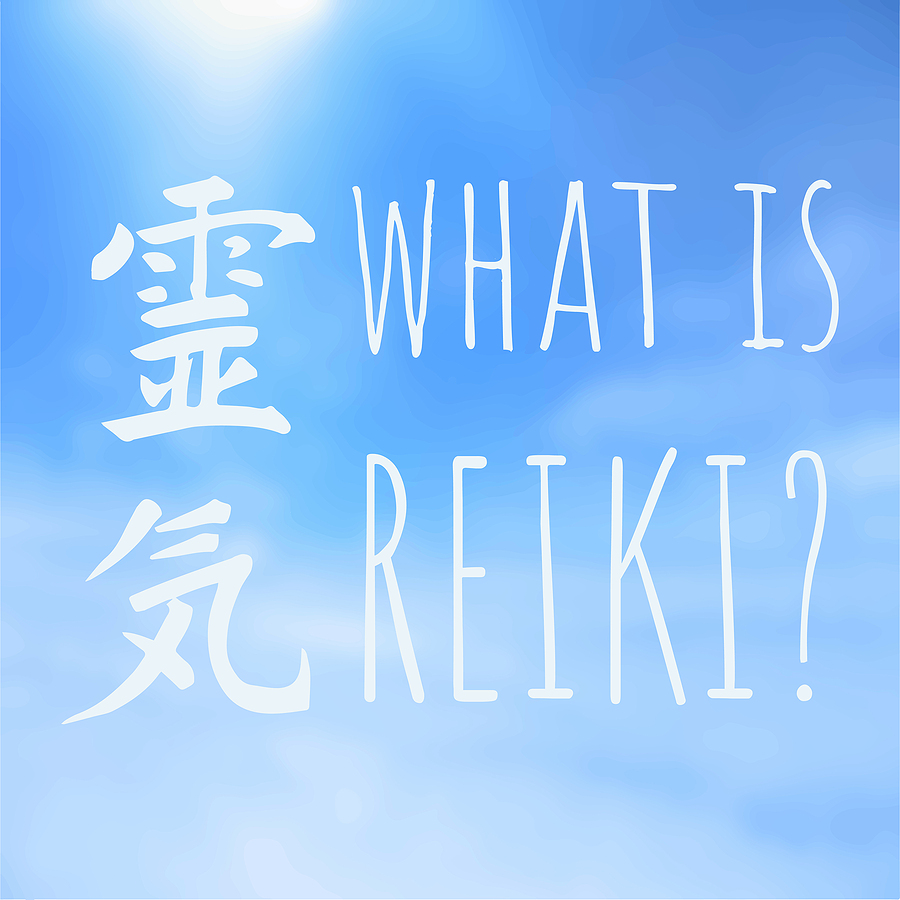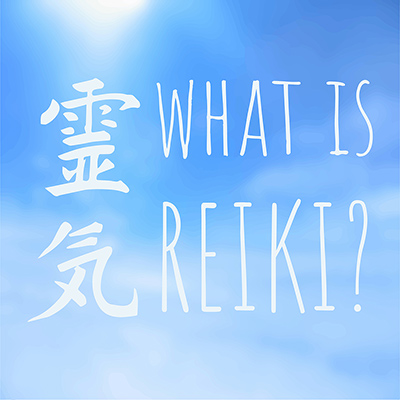

What does the word Reiki mean?
Reiki, which is a form of energy healing, is usually pronounced “RAY-kee.”
The word Reiki actually consists of 2 Japanese words: rei and ki. The translation of the word rei is Spirit, universal spirit, soul, or sacred. The word ki represents vital energy or energy.
When these translations are combined, Reiki is often said to represent “universal life force energy.” This phrase actually provides quite a bit of information about Reiki, including:
- The source of the energy is God/Source/Spirit.
- In addition to being the source of the energy, God/Source/Spirit also guides the energy to where it needs to go.
- Ultimately God/Source/Spirit uses the energy for the highest good.
- Because the energy is coming from God/Source/Spirit, it cannot cause harm.
NOTE: This Blog post provides a quick overview of Reiki. Click here to learn much more about Reiki and IMPART’s Reiki classes.
Who can receive the healing energy of Reiki?
Reiki, which can be done in person or from a distance, can be used on anything or anyone, including:
- Yourself
- Others
- Animals
- Plants
Can Reiki be used for purposes other than healing?
Reiki is most commonly used to promote healing. However, it can also be used for a wide range of purposes. Just a few of these include:
- Clearing negative energy from an area (e.g., your home or office)
- Protecting an area from negative or toxic energy
- Empowering objects and spaces
- Balancing and cleansing chakras
- Increasing spiritual connection and understanding
- Enhancing intuitive abilities
Does Reiki work with Western healing methods?
The beauty of Reiki is that it works in harmony with all forms of Western treatment (e.g., medical, mental health). Although very well known in the East, Reiki is becoming increasingly recognized in the Western world as a valuable supplement to Western treatment. For example, in the United States:
- Various scientific studies are finding statistically significant improvements in healing outcomes when Reiki is included during treatment protocols.
- An increasing number of hospitals, medical clinics, and cancer treatment centers are offering Reiki to patients as a supplement to Western medical approaches.
- Reiki classes have been approved as continuing education units in various professional fields, including registered nurses, nurse practitioners, mental health professionals, massage therapists, athletic trainers, and many more.
How does Reiki work?
The goal with Reiki is actually the same as it is for acupuncturists and acupressurists. All of these fields believe the following:
- Although it cannot be seen with the physical eyes, we all have energy flowing throughout our bodies.
- In the Western world, this energy is often referred to as “chi.”
- In Hawaiian, it is called “ti.”
- In Japan and within the field of Reiki, it is referred to as “ki.”
- This energy flows through pathways in our body called meridians.
- It is believed that if this energy within the body is balanced, then the person will experience health and well-being. However, when the energy becomes unbalanced or blocked, then dis-ease (e.g., physical illness, emotional issues) can result.
Acupuncture, acupressure, and Reiki all use techniques that are believed to balance or unblock the energy within the body/meridians. However, each field uses a different approach:
- Acupuncture uses needles
- Acupressure uses pressure
- Reiki uses energy
The underlying belief is that if this energy is balanced and flowing smoothly within the body/meridians, then the person will relax. When someone is relaxed, scientific research shows that our body will have a better chance of doing what it is naturally designed to do: HEAL!
What does it feel like to receive Reiki?
Reiki Practitioners are trained in how to serve as a conduit or channel for the healing energy (i.e., universal life force energy).
Although other methods are possible, the most common outlet for this energy is the palms of the Practitioner’s hands. During in-person healings, Practitioners will hold their hands either (a) above the body (i.e., “hands-off”), (b) placed on the body (i.e., “hands-on”), or (c) a combination of hands-off and hands-on. All are equally as effective.
Whether Reiki is received using a hands-on or hands-off approach, the recipient may or may not feel the energy coming from the Practitioner. Although the energy is still working, receipients who are not sensitive to energy may simply feel relaxed or may feel nothing at all. However, those who are sensitive to energy often report various body sensations:
- Warmth or heat (most common)
- Coolness or a cool breeze
- Tingling or vibrating
- Slight pressure or pulling sensation
Who can learn Reiki?
This simple and yet profound energy healing technique can be learned by anyone, regardless of age, ethnicity, culture, religious background, etc. In fact, the Practitioner doesn’t even have to believe that there is a God. The only requirement is an understanding that the world is made up of energy.
However, in order to become a conduit or channel for the univesal life force energy, the student must be attuned by a Reiki Master. Therefore, training is required.
Types of Reiki
The 2 most commonly taught forms of Reiki are:
- Usui Reiki: Throughout the Western world and the Far East, Usui Reiki is the most commonly taught form of Reiki. It is believed to originate in Japan with Dr. Mikao Usui.
- Tibetan Reiki: In certain areas of the world, Tibetan Reiki is more commonly taught than Usui Reiki. Tibetan and Usui Reiki share many of the same core beliefs, but there are differences (e.g., Tibetan Reiki teaches more symbols than Usui Reiki).
There are many additional forms of Reiki on the Earth plane today. Some require Usui Reiki as a prerequisite. Usui Reiki is often described as “the trunk of a tree upon which many branches can grow.” In other words, Usui Reiki provides the Practitioner with a good foundation (i.e., the trunk) upon which to explore the many other forms of Reiki that are now taught around the world (i.e., the branches).
Here is just a few of the other forms of Reiki:
- Karuna Reiki®
- Jikiden Reiki (Eastern Method of Reiki)
- Lighterian Reiki
- Sekhem or Seichem Reiki
- Rainbow Reiki®
- Golden Age Reiki
- Tummo Reiki
- Kundalini Reiki
- Angel Reiki
- Crystal Reiki
Some of the healing modalities listed above combine Reiki with drumming, singing bowls, toning, chanting, or the use of crystals when conducting healings. Many offer additional symbols and techniques that can be used in healing and non-healing situations.
Additionally, there are other energy healing modalities that are not based in Reiki (e.g., Pranic Healing, Huna, Quantum Touch, shamanistic practices). Luckily, all of these can be used in conjunction with Reiki.
NOTE: The form of Reiki that is taught through IMPART is Usui Reiki. However, in addition to traditional Usui Reiki symbols, Dr. Anne also teaches some Tibetan Reiki symbols and several non-traditional Reiki symbols. She also includes techniques that come from various other healing modalities (e.g., Karuna Reiki, Pranic Healing, Hands of Light).
How is Reiki taught?
Millions of people around the world have now been attuned to the Reiki energy. Classes are usually taught in-person. (Distance classes are available but are not recommended by IMPART.)
During Reiki classes, the student learns how to serve as a conduit or channel for the universal life force energy. Because the energy involved is very powerful and because of the breadth of the information that needs to be covered, Reiki is taught over a series of levels. During each class:
- The student is taught sacred Reiki symbols that facilitate the flow of the healing energy.
- They are also attuned at each level, which activates the healer’s ability to use the Reiki symbols and to serve as a channel for increasingly powerful levels of healing energy.
Different Reiki Masters/Teachers structure their classes in different ways. Here at IMPART, each class is taught on a single day for 6-8 hours at each level.
Traditionally, only 3 levels of Reiki are taught (i.e., Reiki I, Reiki II, Reiki Master). Increasingly, many Reiki Masters/Teachers are now offering 4 levels. This is due to our increasing understanding of Reiki which has resulted in additional material that needs to be covered (e.g., techniques that use Reiki energy).
Here are links to IMPART’s Reiki classes:
- Reiki I classes
- Reiki II classes
- Reiki III/Advanced Reiki Training (ART) classes
- Reiki Master classes
How does Reiki impact psychic and mediumship abilities?
The vast majority of Reiki Practitioners do not use intuitive abilities when conducting healings. Traditionally, healing sessions are conducted in complete silence with the Practitioner simply serving as a conduit for the universal life force energy. Intuitive information is not shared with the client.
However, for those interested in developing their intuitive abilities, Reiki is actually one of the easiest ways to “jump start” your psychic or mediumship skills.
Why would Reiki classes increase intuitive abilities? Because the Reiki attunements open up the same energy channels (i.e., chakras, meridians) through which psychic and mediumship information is received (e.g., clairvoyance, clairaudience, clairsentience, claircognizance).
For this reason, Dr. Anne recommends that her psychic and mediumship development students take Reiki classes, at least through Reiki II.

RELATED LINKS
- Training and mentoring sessions with Anne
- NOTE: Anne is not offering private Reiki or Karuna Reiki® classes. Please refer to the Directory of IMPART Certified Practitioners for those who have been trained by Anne and are currently offering all levels of Reiki and Karuna Reiki classes.
- IMPART’s Reiki training
- Complete list of classes and workshops that are offered through IMPART
- Frequently asked questions about how to develop your abilities
- Anne’s Blog – Including posts with additional information about Reiki & Healing Arts
- Testimonials and reviews
- IMPART’s online Store
ADDITIONAL INFORMATION
- Be sure to Join Anne’s Online Community to receive:
- Announcements about class offerings, new Blog posts, and new online products when they become available.
- New & Full Moon Reports.
- If you have additional questions, feel free to email us at Anne@AnneReith.com or call (714) 599-0017.

Visit our Facebook page to receive Anne Reith’s daily inspirational quotes and announcements.
By Anne Reith, Ph.D.
